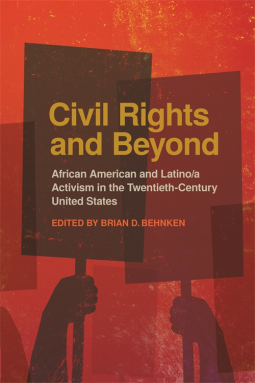
Civil Rights and Beyond
African American and Latino/a Activism in the Twentieth-Century United States
by
This title was previously available on NetGalley and is now archived.
Send NetGalley books directly to your Kindle or Kindle app
1
To read on a Kindle or Kindle app, please add kindle@netgalley.com as an approved email address to receive files in your Amazon account. Click here for step-by-step instructions.
2
Also find your Kindle email address within your Amazon account, and enter it here.
Pub Date Apr 01 2016 | Archive Date Jun 27 2016
Description
Civil Rights and Beyond examines the dynamic relationships between African American and Latino/a activists in the United States from the 1930s to the present day. Building on recent scholarship, this book pushes the timeframe for the study of interactions between blacks and a variety of Latino/a groups beyond the standard chronology of the civil rights era. As such, the book merges a host of community histories—each with their own distinct historical experiences and activisms—to explore group dynamics, differing strategies and activist moments, and the broader quests of these communities for rights and social justice.
The collection is framed around the concept of “activism,” which most fully encompasses the relationships that blacks and Latinos have enjoyed throughout the twentieth century. Wide ranging and pioneering, Civil Rights and Beyond explores black and Latino/a activism from California to Florida, Chicago to Bakersfield—and a host of other communities and cities—to demonstrate the complicated nature of African American–Latino/a activism in the twentieth-century United States.
Contributors: Brian D. Behnken, Dan Berger, Hannah Gill, Laurie Lahey, Kevin Allen Leonard, Mark Malisa, Gordon Mantler, Alyssa Ribeiro, Oliver A. Rosales, Chanelle Nyree Rose, and Jakobi Williams
A Note From the Publisher
Brian D. Behnken is associate professor of history and Latino/a studies at Iowa State University. He is the author of Fighting Their Own Battles: Mexican Americans, African Americans, and the Struggle for Civil Rights in Texas, The Struggle in Black and Brown: African American and Mexican American Relations during the Civil Rights Era, and Crossing Boundaries: Ethnicity, Race, and National Belonging in a Transnational World.
Available Editions
| EDITION | Other Format |
| ISBN | 9780820349176 |
| PRICE | $27.95 (USD) |




